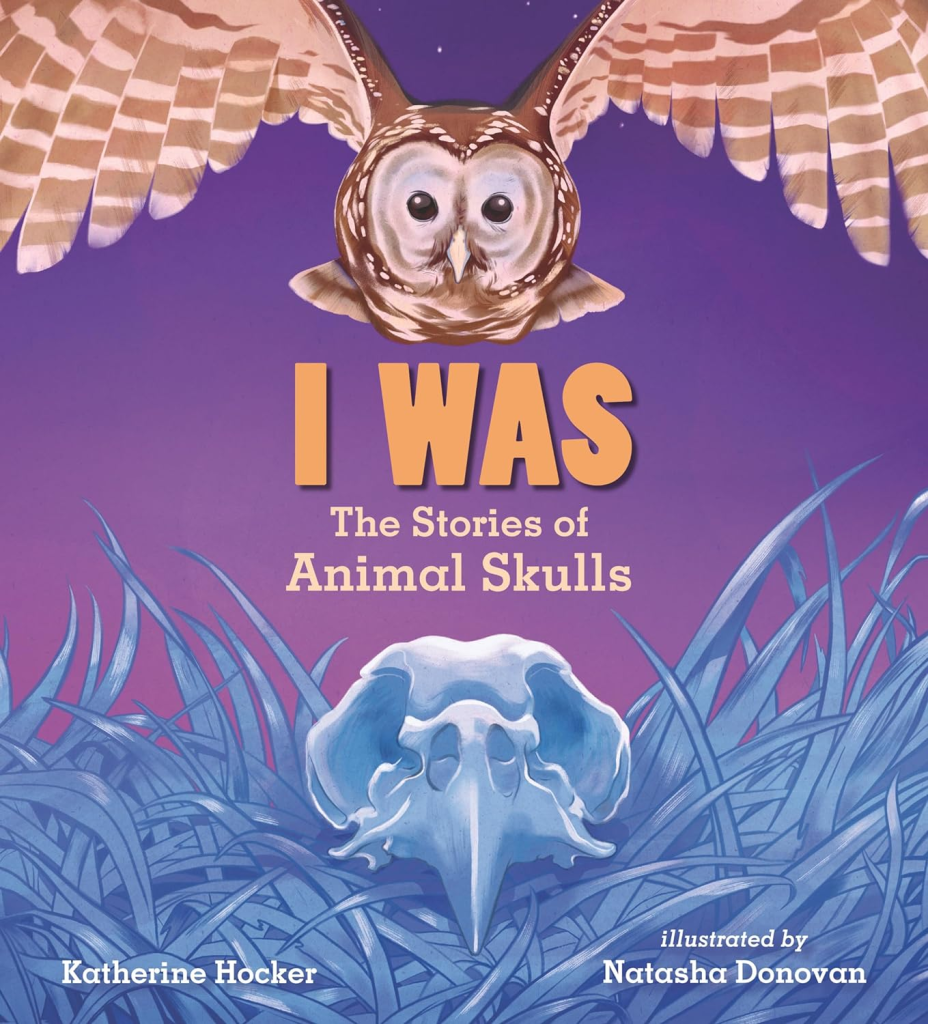Life After Whale: The Amazing Ecosystem of a Whale Fall by Lynn Brunelle, illustrated by Jason Chin (Neal Porter Books, 48 pages, grades 2-5). When a 90-year-old blue whale dies on her annual northern migration, her body slowly sinks a mile before settling on the bottom of the ocean. Scavengers like hagfish and sleeper sharks, attracted by the chemicals released to this rare source of food, start devouring the whale meat. This process can go on for years until only the skeleton is left. A second stage begins with a new set of scavengers (hello, bone-eating zombie worms), who feed on the whale remains for decades. 150 years later, the bones are still releasing chemicals that feed algae, which in turn feed krill. The krill is eaten by a pregnant blue whale, thus completing the cycle of life that includes the old blue whale and the new one. Includes additional information about blue whales, ecosystems, and the four phases of a whale fall ecosystem, as well as additional resources.
This beautiful, well-written science book is sure to be a contender for the Caldecott and the Sibert awards, both of which amazing illustrator Jason Chin has won before. The information is fascinating, with descriptions of a process and animals that exist so far under the sea that scientists are just beginning to learn about them. There’s a lot of text and scientific information, which made me wonder if the book would hold the attention of younger elementary readers. If it’s too much, you can direct them to Melissa Stewart’s Whale Fall.
I Was: The Story of Animal Skulls by Katherine Hocker, illustrated by Natasha Donovan (Candlewick, 40 pages, grades 2-5). A skull says, “I was,” as the teeth, bones, holes, and cracks help tell the story of the animal it belonged to. Each two-page spread shows a skull with the voice of the animal describing part of the skull that hints at its identity. Turn the page and see the animal as it looked when it was alive. There’s a lynx, a deer, a beaver, a hummingbird, a wolf, and an owl. The last few pages celebrate the human skull, which protects the brain that allows us to understand the world around us. Includes a labeled diagram of a human skull with additional information about different parts, more information about the animals in the book and the human skull, and a few additional resources.
The large, vivid illustrations capture both the skulls and the animals beautifully. I always enjoy a book that gives kids the opportunity to guess what’s coming next, as it makes for a more engaging read-aloud. I found the premise kind of sad, though, with dead animals describing themselves when they were alive, and I wish the name of the animal had been included with the picture.
Survival of the Fittest: Who Will Come Out on Top? by Rebecca Donnelly, illustrated by Misa Saburi (Henry Holt and Co., 112 pages, grades 2-5). A reality TV show has six animals competing for the best engineering feat, with a hermit crab serving as host and three sharks judging. A chameleon, humpback whale, gecko, elephant, peacock mantis shrimp, and diabolical ironclad beetle each make a case for why it should be the winner, showing off a unique adaptation that allows it to survive. A winner is declared in the final chapter, and additional information about each animal’s “invention” is given on the last few pages.
Billed as book 1, this looks to be the start of a graphic novel series that may appeal to fans of the Who Would Win series. It’s cute and funny, with some interesting animal information, although not nearly as much as Who Would Win provides. The winner seemed like kind of a random choice, but I guess that’s more or less in keeping with the nature of reality TV.



One thought on “Animals, dead and alive”